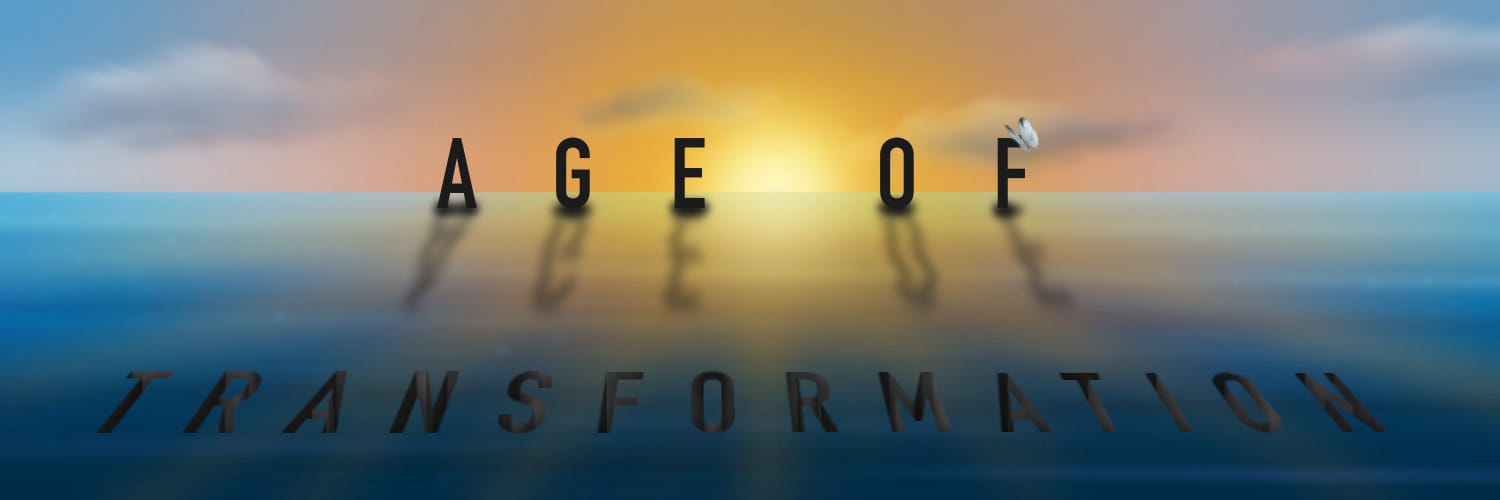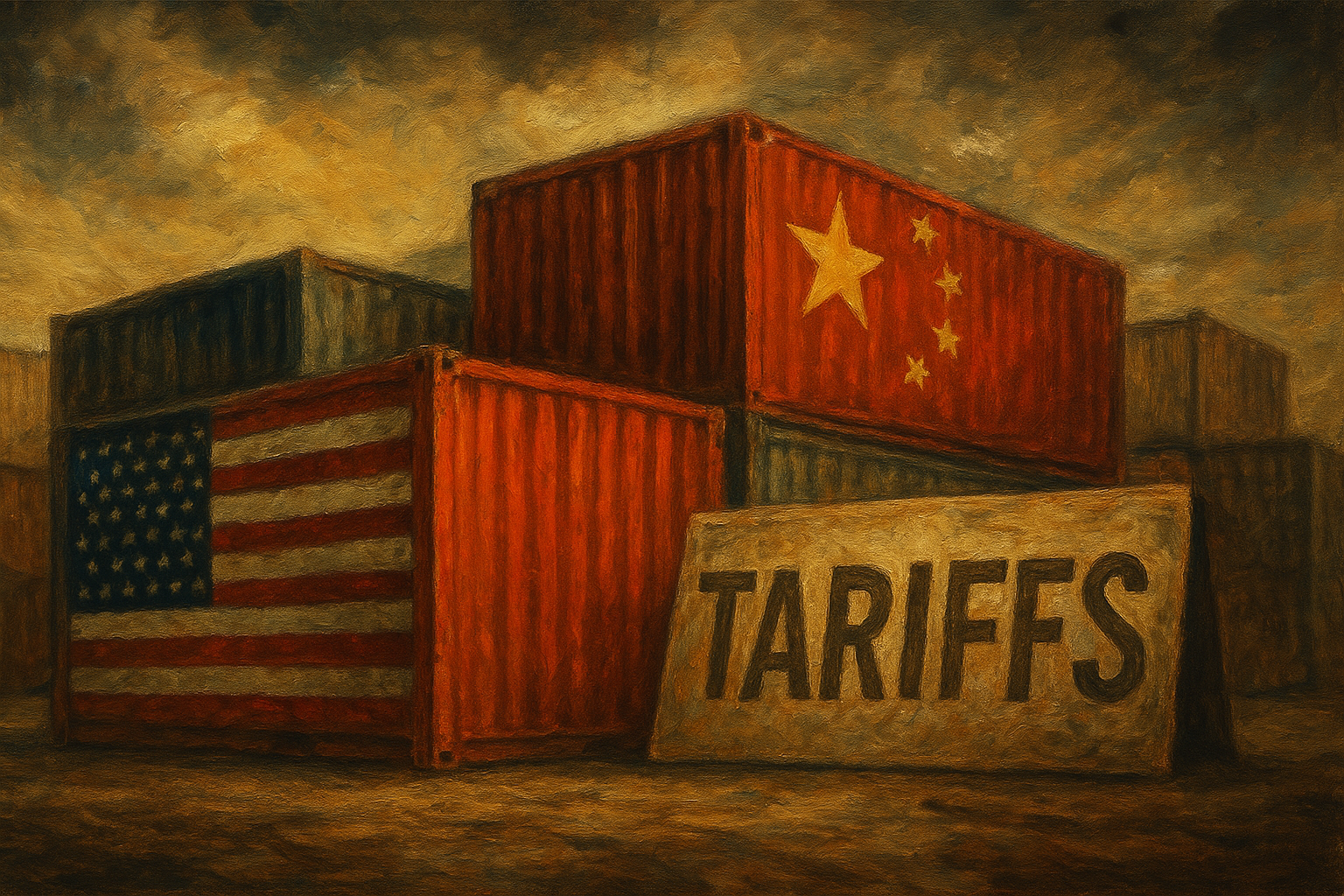When Washington and London unveiled their new Atlantic Partnership for Advanced Nuclear Energy, ministers promised nothing less than a renaissance. "Golden age of nuclear delivers UK-US deal on energy security" blared a UK Government press release.
The partnership will pour money into Small Modular Reactors (SMRs) and Advanced Modular Reactors (AMRs), streamline approvals, and create new supply chains to end dependence on Russian nuclear fuel by 2028. UK officials have already touted plans for up to a dozen advanced reactors at Hartlepool, while U.S. firms like X-energy and Rolls-Royce are being lined up as champions of the so-called nuclear future.
"These major commitments set us well on course to a golden age of nuclear that will drive down household bills in the long run, while delivering thousands of good jobs in the short term" declared Prime Minister Keir Starmer. There's only one problem. He's completely wrong. How do we know? This little thing called... science.
The Mirage of a New Nuclear Age
The rhetoric is seductive: cheap, clean, “homegrown” energy; industrial jobs; independence from geopolitical rivals. But peel back the press release, and the evidence is damning. The nuclear strategy is not just unlikely to deliver on its promises — it is a financial and technological trap that will inflate costs and weaken both countries’ energy systems – as well as delaying decarbonisation. In system terms, it represents a rigidity trap: doubling down on an old, brittle paradigm just as a new one — solar, wind, and batteries — is scaling exponentially
Nuclear’s record: delays, cancellations, spiralling costs
The claim that SMRs will be faster and cheaper than conventional reactors has already been falsified. In the United States, the flagship NuScale Carbon Free Power Project in Idaho — once billed as the first commercial SMR — was terminated in November 2023 after its costs more than doubled. Initial estimates of $9,600 per kilowatt ballooned to $21,500/kW, pushing the project’s total to nearly $10 billion. Its municipal utility backers walked away, citing the unaffordable price.
Nor are the problems limited to small reactors. In Britain, Hinkley Point C — originally priced at £18 billion — is now expected to cost as much as £46 billion, with first power delayed to 2029 at the earliest. In the US, the two new Vogtle units in Georgia — the country’s first new reactors in decades — took nearly 15 years to build at a cost of $30–35 billion, more than double initial estimates. Consumer bills are rising to cover the overruns.
This is not a string of unlucky projects. It is the industry’s norm. And it translates into some of the highest electricity costs on Earth. According to Lazard’s 2023 Levelized Cost of Energy report, nuclear’s average cost has risen by nearly 50% since 2009, to about $182 per megawatt-hour. Over the same period, solar costs fell by 83% and wind by 63%, making them between three and thirty times cheaper per kilowatt-hour.
Scaling backwards while renewables surge
Even as governments talk of nuclear’s “golden age,” the technology is shrinking. The World Nuclear Industry Status Report 2024 shows that in 2023, the global nuclear fleet net-shrank by 1 gigawatt — five new reactors started up, six were shut down. By contrast, solar and wind added a staggering 460 GW in the same year. Solar generation alone grew by nearly 30%, overtaking nuclear’s global output years ago.
The investment flows are just as stark. The International Energy Agency’s 2024 World Energy Investment report estimates that of more than $3 trillion in global energy investment this year, about $2 trillion is going to clean energy — overwhelmingly solar, wind, batteries, and grids. Nuclear attracts only a fraction.
In other words: the system has already moved on. Renewables are scaling by the hundred-GW every year; nuclear is declining. Renewables are driving costs down; nuclear is driving them up.
A rigidity trap in the back-loop of civilisation
From a planetary phase shift perspective, this makes sense. Industrial civilisation has entered the release phase of its adaptive cycle: a period when old energy regimes, weighed down by their complexity and cost, lose resilience and collapse, making way for new ones. Nuclear is part of the old system. It is capital-intensive, centralised, and brittle. Solar, wind, and batteries are the seeds of the new: modular, distributed, learning-driven, and abundant.
Betting on nuclear now is like pouring money into typewriters while the internet takes off. It is worse than wasted effort: it diverts capital, labour, and policy attention away from the only technologies that can deliver affordable, resilient decarbonisation on the timescales we need.
Already have an account? Log In
Small Reactors, Big Problems
If the financial record of nuclear should already give us pause, the technical and supply chain realities of SMRs and AMRs raise even deeper concerns.
Factories that don’t exist
The sales pitch is simple: build reactors like jetliners or smartphones, mass-produce them in factories, ship them to site, and let scale drive costs down. But in practice, this dream collides with material reality. As the World Nuclear Industry Status Report 2024 notes, no SMR design has yet been licensed and produced at commercial scale in the West. There are no dedicated factories for pressure vessels or advanced materials, and no order books big enough to justify them. Until those exist, costs will remain speculative and high.
Fuel fragility: HALEU and dependence on Russia
Many advanced designs will need High-Assay Low-Enriched Uranium (HALEU) fuel, enriched to 15–20% U-235 instead of the 3–5% used in today’s reactors. At present, Russia is the only commercial supplier. The UK's ambition to stand up domestic enrichment capacity targets 2031, meaning even if feasible it won't come online for over six years and many billions in subsidies. Until then, every new SMR is effectively dependent on Russian supply — precisely the vulnerability this deal was meant to escape.
Even once HALEU facilities exist, scaling them to serve dozens of reactors will be expensive and politically sensitive. The uranium enrichment and conversion markets are already highly concentrated, a systemic fragility that analysts warn could worsen if nuclear demand expands without secure supply. And given that no commercially viable SMRs or AMRs actually exist yet despite being in development for decades, and that the optimistic timelines for initial commercial deployment are the early 2030s - and at a cost that cannot compete with renewables - there is no sound basis to see this is remotely plausible. Governments are playing with taxpayer money and gambling it on unproven non-existence technology hyped up by incumbent industries who are on track for economic obsolescence. In the words of former nuclear industry executive, Arnie Gundersen:
... despite all the headlines and billions in taxpayer subsidies, an SMR will never be built — not in time to matter, and not at a price that makes sense. But that won’t stop the industry from burning through billions more in public money, chasing a fantasy that distracts and diverts resources from real, proven solutions.
The breeder mirage
When pressed on uranium limits, advocates fall back on breeder reactors — machines designed to create more fuel than they consume. But decades of experience show the technology doesn’t work at scale. France’s Superphénix, Japan’s Monju, the US EBR-II, and Russia’s BN-series reactors all consumed vast sums of public money for limited output and frequent safety issues. Billions were spent; almost nothing endures.
A blunt truth: if nuclear were scaled up to supply all global electricity, known uranium reserves would be exhausted in 5–10 years without breeders. With breeders, it would require technologies that have already failed repeatedly across half a century. Renewables, by contrast, draw primarily on abundant materials — silicon, steel, aluminum — that are already mined and recycled at scale.
Flexibility at a cost
SMRs are often marketed as “flexible,” able to ramp power output to complement variable renewables. But nuclear economics only work at very high utilisation: 80–90% capacity factors are needed to amortise fixed costs. Run a plant at half-load and the delivered cost per megawatt-hour effectively doubles. As the Institute for Energy Economics and Financial Analysis points out, flexible nuclear is an oxymoron: it can only provide flexibility by destroying its own economics.
By contrast, batteries and demand response are born flexible. Lithium-ion pack prices have fallen nearly 90% since 2010, deployment scales in months rather than decades, and their marginal cost of cycling is near zero. They don’t need to pretend to follow the grid — they are the grid’s flexible backbone.
A rigidity trap in a world of release
Here again, the planetary phase shift framework explains the mismatch. In the release phase of a civilisational energy cycle, resilience comes from distribution, speed, and learning. Nuclear doubles down on centralisation, long lead times, and brittle supply chains. That is why, from a systems perspective, nuclear is part of the old order, while solar, wind, and batteries are the seeds of the new.
Put bluntly: the very features that make SMRs look attractive in political speeches — their small size, their factory dream, their fuel “innovation,” their flexibility pitch — all unravel under scrutiny. They are not fixes. They are fragilities in disguise.
Net Energy and the Myth of Nuclear Surplus
Beneath the headlines about strike prices and subsidies lies a deeper measure of viability: Energy Return on Investment (EROI). This biophysical metric asks how much net energy a technology delivers to society once the energy cost of building, fueling, and operating it is subtracted. A high EROI means energy abundance; a low or declining EROI means the system consumes more of its own output just to keep going — a classic symptom of overshoot.
Renewables are climbing the EROI ladder
Modern onshore wind typically achieves an EROI of 20-30:1; solar PV has climbed into the 10-20:1 range depending on latitude and system boundary. A landmark meta-review by Kubiszewski et al. found that wind consistently sits above both nuclear and fossil fuels on net energy terms. More recent analyses confirm the trend: lifecycle studies show solar’s energy payback has fallen to 1–3 years, with modules lasting 25–30 years, implying strong net surplus (Raugei & Leccisi, Nature Energy, 2016).
The International Energy Agency notes that the productivity of renewable investment is rising sharply: in 2023, each dollar invested in solar and wind produced 2.5 times more energy than it would have just a decade earlier. In biophysical terms, this is the signature of a system moving into the front loop of growth: compounding gains, falling energy costs, and increasing net energy flows.
Nuclear’s flatlining - and declining with SMRs
By contrast, nuclear has never enjoyed such gains. Early estimates in the 1970s sometimes put nuclear’s EROI in the range of 10-15:1. But modern lifecycle analyses find lower figures once mining, enrichment, waste, and decommissioning are fully included. A UK government-commissioned review concluded nuclear’s EROI was in the same range as, or below, modern solar PV, and subject to decline as ore grades fall.
A detailed study by Weissbach et al. compared different sources on an “energy return on electricity invested” basis, including storage needs. It found that nuclear sits around 7-10:1, significantly below wind and hydro. As uranium ore grades decline, the energy cost of mining and milling rises exponentially. Charles Hall and David Murphy warn that by mid-century, without breeder breakthroughs, nuclear’s EROI could erode further, approaching the minimum threshold of viability for complex societies.
SMRs worsen the picture. Because they lose economies of scale in the balance of plant — a containment building and cooling system for a 300 MW reactor is not one-tenth the size of a 3 GW plant — the energy invested per unit output rises. Although there are no EROI focused studies, research modelling small reactor lifecycles points to lower net energy returns than conventional nuclear, even before considering exotic fuels like HALEU that require more intensive enrichment.
System implications: narrowing resilience
There’s also a feedback loop nuclear advocates rarely acknowledge: as fossil fuel EROI declines, nuclear construction becomes more energy-hungry. One major study showed that if nuclear were scaled up aggressively to supply global power, we would only have about 5 years of commercially viable uranium supply left. In other words, nuclear expansion in a declining fossil base could tip from energy source to energy sink.
Why does this matter? Because EROI is the hidden foundation of resilience. Societies need a healthy surplus to fund education, healthcare, culture, and governance. Declining EROI squeezes that surplus, leading to social unrest and political volatility — a pattern I traced in Failing States, Collapsing Systems. If Britain and America bet on nuclear, they are effectively choosing a path of declining net energy at the very moment when renewables are breaking into surpluses.
This is why planetary phase shift theory reframes the choice so starkly: nuclear is the epitome of a late-cycle technology — rising costs, flat or falling net returns, brittle supply chains. Solar, wind, and batteries are the opposite: early-cycle technologies, compounding surplus, scaling fast, and reshaping the system’s rules - which point the path to genuine energy abundance.
Want deeper insights? Get access to detailed macrointelligence, scientific white papers, and investor briefings by subscribing to premium...
Firm Power to 2050 and Beyond
If cost, delay, and net energy don’t already seal the case, then a final question clinches it: where should Britain and America put their scarce energy dollars if the goal is reliable, affordable, firm zero-carbon power through mid-century?
Nuclear’s negative learning vs. renewables’ exponential curves
The numbers are unambiguous. Lazard’s 2023 LCOE analysis shows nuclear electricity costs averaging $182/MWh, up nearly 50% since 2009. Over the same period, solar PV fell to $61/MWh (–83%) and wind to $46/MWh (–63%). Nuclear is the only major technology whose costs are rising, not falling.
By contrast, solar, wind, and batteries (SWB) continue to demonstrate strong experience curves: costs fall by 10-30% with each doubling of cumulative deployment.
Firming renewables: cheaper than nuclear by orders of magnitude
A common objection is that renewables are “intermittent” and therefore need nuclear as backstop. But this confuses the problem. Firmness is a system property, not a single technology. The right question is: what’s the cheapest portfolio for 24/7 supply?
The answer is already emerging. Battery storage costs have plunged almost 90% since 2010, and multi-hour systems are now competitive with gas peakers. Studies show that solar + storage is already cheaper than new nuclear in many markets, with wind + storage not far behind. The U.S. National Renewable Energy Laboratory has modelled high-renewables scenarios with reliability comparable to today’s grids — at lower overall system cost than nuclear-inclusive pathways.
Meanwhile, new grid strategies are lowering costs even further: supersizing renewables by 3-5× demand dramatically reduces storage needs. RethinkX’s 'Clean Energy U-Curve' shows that by overbuilding solar and wind, battery requirements fall by up to 90%, while producing massive “superpower” surpluses at near-zero marginal cost. In Germany, the lowest-cost 100% SWB system meeting demand by 2030 would cost $367 billion and produce an additional 130 TWh of free surplus power annually — surpluses that could decarbonise industry, power data centres, or produce green hydrogen. Nuclear plays no role in that scenario.
Opportunity costs: every pound sunk in nuclear is a pound not spent on scaling abundance
This is why no new investment in coal, gas, or nuclear is economically rational from this point forward. Solar, wind, and batteries will undercut all incumbents including nuclear through to the 2030s.
For Britain and America, that means every dollar sunk into SMRs is a dollar diverted from projects that could be online in 12-36 months, not 12-36 years. It is a decade lost, while bills stay high and fossil fuel dependence persists.
The planetary phase shift verdict
Situating this in the planetary phase shift framework makes the danger clear. Civilisation is in the release phase of its fossil-fuelled cycle, marked by declining EROI, systemic shocks, and institutional brittleness. In that phase, resilience comes from fast-learning, distributed, modular systems. That is why solar, wind and batteries are surging: it matches the front-loop dynamics of the new system, with steep learning curves and rising net energy. Nuclear, by contrast, embodies the back-loop rigidity of the old: centralised, slow, brittle, declining in net return.
The conclusion is stark: the US-UK nuclear push is not a bold vision but a costly delusion. It will raise system costs, slow the transition, and weaken resilience. The true path to affordable, firm, zero-carbon power is already in our hands: solar, wind, and batteries, scaled deliberately and firmed with storage, demand response, and interconnection.
This isn’t speculation. It’s what the data says. And it’s why continuing to double down on nuclear in 2025 is the energy equivalent of investing in typewriters on the eve of the internet.
If you appreciated this piece, sign up to get this newsletter delivered straight to your inbox for free. Or join premium to get access to deeper insights, white papers, scientific research and macrointelligence reports
Already have an account? Log In







